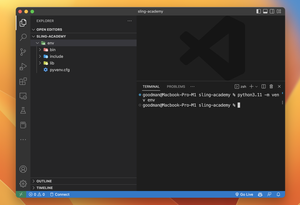Introduction
Encountering an HTTPError while using the Requests module in Python indicates that your HTTP request resulted in a response with an error status code (e.g., 404 Not Found, 500 Internal Server Error). Understanding the root causes and implementing the right solution is essential to handle these errors gracefully.
Cause Analysis
The Python Requests module raises an HTTPError when the server sends back a response with an HTTP status code that signifies an error (status codes 4xx or 5xx). It could be due to various reasons like incorrect URL, server error, lack of authorization, and more.
Solutions for Handling HTTPError in Python Requests
Check Response Status
Before taking any action with the response, verify the status code to ensure it’s within an acceptable range (e.g., 200-299 for successful responses).
- Examine the status code of the response object.
- Use conditionals to do actions based on different status codes.
- Handle exceptions properly using try-except blocks.
Code example:
import requests
try:
response = requests.get('http://example.com/path/to/resource')
response.raise_for_status()
except requests.exceptions.HTTPError as http_err:
print(f'HTTP error occurred: {http_err}') # Python 3.6+
except Exception as err:
print(f'Other error occurred: {err}')
else:
print('Success!')
– Advantages: Simple implementation; early detection of errors.
– Limitations: Does not handle the root cause of the error.
Correct the Request URL
Ensure that the URL used in the request is valid and corresponds to the correct resource on the server. What we need to do here are:
- Check for typos in the URL.
- Verify that the endpoint is correct and available.
- Make sure the URL schema (http or https) is correct.
A small code example:
import requests
url = 'http://api.slingacademy.com/v1/sample-data/photos'
try:
response = requests.get(url)
response.raise_for_status()
except requests.exceptions.HTTPError:
print('HTTPError: Please check the URL.')
– Advantages: Resolves typos and invalid URLs.
– Limitations: Depends on the accuracy of the corrected URL input.
Authentication Handling
Some endpoints require authentication using headers, tokens, or user credentials. Ensure your request includes these when needed.
The steps to follow:
- Include appropriate headers or auth parameters.
- Obtain valid credentials or tokens for the API.
- Use requests’ built-in authentication handling methods as necessary.
Example:
import requests
from requests.auth import HTTPBasicAuth
auth_details = HTTPBasicAuth('user', 'pass')
url = 'http://example.com/secure/resource'
try:
response = requests.get(url, auth=auth_details)
response.raise_for_status()
except requests.exceptions.HTTPError as http_err:
print(f'HTTP error: {http_err}')
– Advantages: Manages access to restricted resources.
– Limitations: Requires knowing the exact type of authentication needed.
Conclusion
Handling the HTTPError in Python’s Requests module requires understanding the potential causes and applying appropriate solutions. Implementing checks, correcting URL details, or handling authentication properly will effectively manage errors and improve your project’s robustness.











